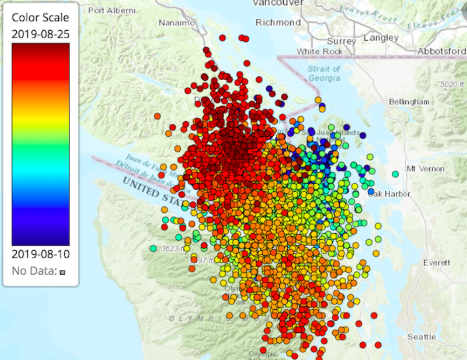Published on August 28, 2019

Seismologists are monitoring a seismic event that they say is happening right now. It’s called a “slow-slip” event. According to the Pacific Northwest Seismic Network at the University of Washington, this event happens about every 14 months.
PNSN has been tracking it for about two decades, ever since the Nisqually earthquake.
Think of Earth as large puzzle pieces. The land that we’re on right now is called the North American Plate. There is another tectonic plate called the Juan de Fuca plate that is just off our coast. According to seismologists, the offshore plate (Juan de Fuca Plate) is moving underneath the North American plate — or slipping, slowly.
“Once in a while, the North American plate slides just a little bit, a few inches toward the west. So, the region that’s just under the Olympic Peninsula or on Vancouver Island is moving just a few inches to the west during these slow slip events,” said Harold Tobin, director of the Pacific Northwest Seismic Network and professor of Earth and Space Sciences in the College of the Environment.
But what’s concerning for some seismologists, and there is a difference in opinion about this, is that the slow-slip event will slightly increase the chances of earthquakes, or even the “big one.” Typically the plates are locked, according to Tobin. But because the plates are moving, there is concern that the “slip” will cause an earthquake.
Continue reading at Q13 Fox.
Originally written by Brian Flores for Q13 Fox.